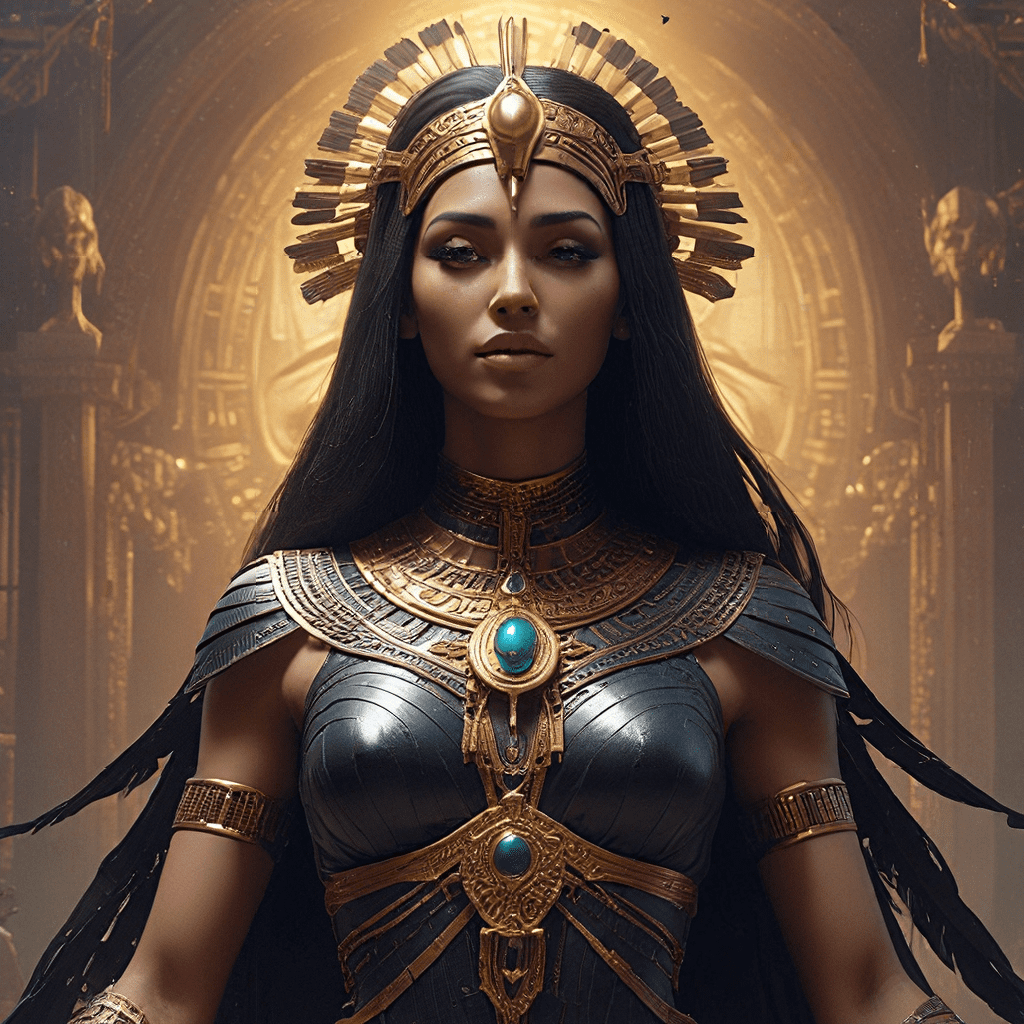1. Introduction: The Multifaceted Figure of Nephthys
In the rich tapestry of ancient Egyptian mythology, Nephthys stands as a goddess of immense importance, embodying the multifaceted concepts of death, mourning, and protection. She was a prominent figure in ancient Egyptian religion, and her influence permeated daily life, shaping people’s beliefs and practices related to life, death, and the afterlife.
Nephthys, whose name translates to “Mistress of the House,” was revered for her multifaceted nature, encompassing aspects of both darkness and light. Her association with death was deeply intertwined with her role as a compassionate and protective figure, ensuring the safe passage of souls into the afterlife.
2. Origins and Family: A Daughter of Nut and Geb
Born from the union of Nut, the sky goddess, and Geb, the earth god, Nephthys was one of the most prominent deities in the Egyptian pantheon. She was a sibling to Osiris, Isis, and Set, each playing significant roles in Egyptian mythology. This family dynamic was fraught with drama and intrigue, mirroring the complex and often unpredictable nature of life and death.
Nephthys’ relationship with her siblings profoundly impacted her role. She was closely connected to Osiris, the god of the underworld, and Isis, the goddess of magic and healing. Nephthys’ connection to Osiris, the god of the underworld, was particularly significant, as it further solidified her ties to death and the afterlife.
3. Her Role in Death and the Underworld
Nephthys’ association with death was profound and multifaceted. She was widely regarded as a protector of the deceased, guiding their souls to the afterlife and ensuring their safety and well-being in the realm of the dead. The ancient Egyptians believed that Nephthys was present at the moment of death, comforting and supporting the departed soul as it embarked on its final journey.
Nephthys’ role in the story of Osiris’s death and resurrection further solidified her connection to the cycle of life and death. When Osiris was murdered by his envious brother, Set, Nephthys played a crucial role in his resurrection. She assisted Isis, Osiris’s wife, in embalming his body, thus laying the foundation for the mummification process, a central element of ancient Egyptian funerary rites.
4. A Motherly Figure: Protecting and Nurturing
Beyond her association with death, Nephthys was also a powerful mother figure. She was regarded as the mother of Anubis, the jackal god of mummification. This connection further underscored her involvement in the funerary rites of the ancient Egyptians. Anubis was believed to guide the souls of the deceased to the afterlife, and Nephthys’ role as his mother suggests her enduring presence and influence in the realm beyond death.
The ancient Egyptians believed that Nephthys’ protective nature extended to all deceased individuals. They saw her as a compassionate and caring figure who offered comfort and support during times of grief and loss. Her maternal instinct was deeply intertwined with her role in mourning, as she was believed to soothe the pain of the bereaved and provide solace in their time of need.
5. The Power of Magic and Protection
Nephthys was known for her powerful magical abilities, wielding spells, incantations, and protective charms to ward off evil and ensure safety. Her magical powers were often associated with her protective nature. She was believed to have the ability to banish evil spirits, protect people from harmful influences, and ensure the safe passage of souls to the afterlife.
The ancient Egyptians believed that Nephthys’ magical powers were embodied in amulets and talismans bearing her image. These objects were thought to provide protection and ward off negative energies. They were often worn as pendants or placed in tombs, both as a symbol of her protection and as a means of securing a smooth transition into the afterlife.
6. Nephthys in Art and Mythology
Nephthys was often depicted in ancient Egyptian art as a woman with a vulture head. The vulture was a powerful symbol of motherhood and protection, further reinforcing Nephthys’ nurturing and protective role. This imagery reflected her connection to death, mourning, and the afterlife, while simultaneously highlighting her gentle and compassionate nature.
Her presence is found in a wide range of artistic expressions, including paintings, sculptures, and hieroglyphic inscriptions. These depictions provide valuable insights into her multifaceted role and the importance she held in ancient Egyptian belief systems. The symbolism behind her imagery and attributes reveals the complex nature of death, mourning, and protection, concepts that deeply resonated with the ancient Egyptians.
7. Nephthys and the Cycle of Life and Death
Nephthys’ figure encapsulates the eternal cycle of life and death that was central to ancient Egyptian beliefs. She embodied the transition from life to death, offering comfort and guidance during the final journey of the soul. She also played a vital role in the afterlife, ensuring the safety and well-being of the deceased as they navigated the world beyond.
Nephthys’ prominence in ancient Egyptian mythology and art demonstrates the enduring fascination with both the mysteries of death and the power of protection. Her story serves as a reminder that even in the face of death, there is still a powerful sense of hope and possibility, and that the cycle of life and death is a continuous journey that leads to rebirth and renewal.




